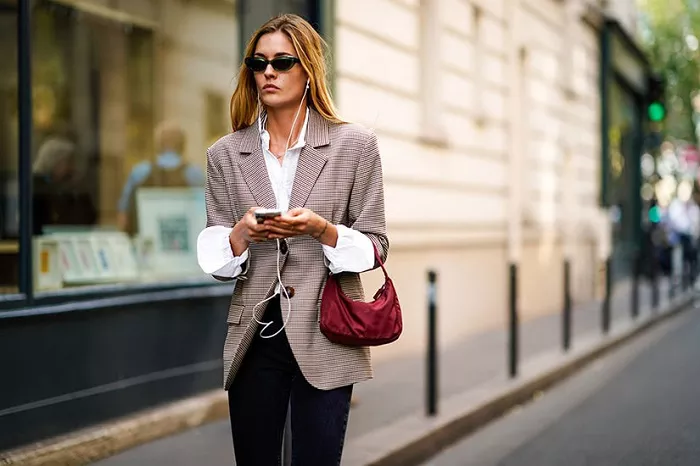Business casual attire can often be a gray area for many women in the workplace. Unlike the more straightforward and rigid guidelines of formal business attire, business casual offers a mix of professional and relaxed clothing options. This guide will help clarify what constitutes business casual for women, providing practical tips and stylish ideas to navigate this dress code with confidence and flair.
Understanding Business Casual
Business casual is a dress code that blends traditional business wear with a more relaxed style. It allows for personal expression while maintaining a professional appearance. The key to mastering business casual is finding the balance between formal and informal.
Key Elements of Business Casual Attire
Tops and Blouses
Button-Down Shirts: These are versatile and can be paired with skirts, trousers, or jeans for a polished look. Opt for neutral colors like white, blue, and pastels.
Blouses: Choose blouses in soft fabrics like silk or chiffon. Patterns such as polka dots, stripes, or subtle florals add a touch of personality without being overwhelming.
Knit Tops: A high-quality knit top can be both comfortable and professional. Stick to classic cuts and solid colors for a sophisticated appearance.
Bottoms
Trousers: Tailored trousers are a staple of business casual attire. Choose styles like straight-leg, ankle-length, or wide-leg in neutral shades such as black, navy, or gray.
Skirts: Pencil skirts, A-line skirts, and midi skirts are excellent choices. Ensure they are knee-length or longer to maintain a professional look.
Dress Pants: Comfortable yet stylish, dress pants can be paired with a variety of tops. Look for fabrics like wool or cotton blends.
Dresses
Sheath Dresses: These are classic and flattering, perfect for a business casual setting. Choose solid colors or subtle patterns.
Wrap Dresses: These offer a feminine touch while being appropriate for the office. Stick to knee-length or midi options.
A-Line Dresses: These are versatile and can be dressed up or down. Opt for structured fabrics to maintain a professional appearance.
Blazers and Cardigans
Blazers: A well-fitted blazer can elevate any outfit. Choose neutral colors and classic cuts to ensure versatility.
Cardigans: These are great for layering. Opt for fine-knit cardigans in solid colors to keep the look professional.
Footwear
Flats: Ballet flats, loafers, and mules are comfortable and stylish. Stick to leather or suede for a polished look.
Heels: Kitten heels, block heels, and pumps are great options. Avoid overly high heels to ensure comfort throughout the day.
Boots: Ankle boots can be worn with trousers or skirts. Choose sleek designs in neutral colors.
See Also: What Not To Wear For Plus-Size Women
Accessories
Jewelry: Keep it minimal and elegant. Simple studs, a delicate necklace, and a classic watch can enhance your outfit without overpowering it.
Bags: Opt for structured handbags or totes. Neutral colors like black, beige, and brown are versatile and professional.
Belts: A well-chosen belt can add definition to your outfit. Stick to classic styles in neutral shades.
Seasonal Adjustments
Spring/Summer
Lighter Fabrics: Choose breathable fabrics like cotton, linen, and lightweight wool.
Bright Colors: Incorporate pastel shades and light neutrals.
Layering: Use light cardigans or blazers for cooler mornings or air-conditioned offices.
Fall/Winter
Warmer Fabrics: Opt for wool, cashmere, and thicker cotton blends.
Rich Colors: Deep hues like burgundy, navy, and forest green are great for colder months.
Layering: Use sweaters, blazers, and tights to stay warm while looking professional.
Common Mistakes to Avoid
Overly Casual Items: Avoid jeans with rips, shorts, tank tops, and graphic tees. These items are too casual for a business environment.
Too Formal: Steer clear of full suits unless required. Business casual allows for a more relaxed approach.
Inappropriate Lengths: Ensure skirts and dresses are knee-length or longer. Avoid overly short or revealing clothing.
Excessive Accessories: Keep accessories minimal to avoid a cluttered look. Opt for a few key pieces that complement your outfit.
Poor Fit: Clothing should be well-fitted but not too tight. Ill-fitting clothes can look unprofessional.
Creating a Business Casual Wardrobe
Building a business casual wardrobe involves investing in versatile, high-quality pieces that can be mixed and matched. Here are some essential items to include:
Basic Tops: A selection of button-down shirts, blouses, and knit tops in neutral colors.
Tailored Trousers: At least two pairs of well-fitted trousers in black, navy, or gray.
Skirts: A pencil skirt and an A-line skirt in classic shades.
Dresses: Two or three business-appropriate dresses in different styles.
Blazers and Cardigans: A blazer and a few cardigans for layering.
Footwear: Comfortable yet stylish flats, heels, and ankle boots.
Accessories: Minimalist jewelry, a structured handbag, and a classic belt.
Practical Tips for Styling Business Casual Outfits
Mix and Match: Combine different pieces to create a variety of outfits. For example, pair a blouse with tailored trousers one day and with a pencil skirt the next.
Layering: Use blazers, cardigans, and sweaters to add depth and interest to your outfits. This also allows you to adjust to varying office temperatures.
Neutral Base: Start with neutral-colored basics and add pops of color with accessories or one standout piece.
Personal Touch: Add a touch of your personal style with accessories, a unique handbag, or a signature piece of jewelry.
Conclusion
Business casual for women strikes a balance between professional and comfortable, allowing for personal expression while maintaining a polished appearance. By understanding the key elements and avoiding common mistakes, you can build a versatile and stylish business casual wardrobe. With thoughtful choices and practical styling tips, dressing for work can become a seamless and enjoyable part of your daily routine.
Remember, the goal of business casual is to feel confident and professional without sacrificing comfort or personal style. By investing in quality pieces and being mindful of your office culture, you can navigate the business casual dress code with ease and elegance.
Related topics:

